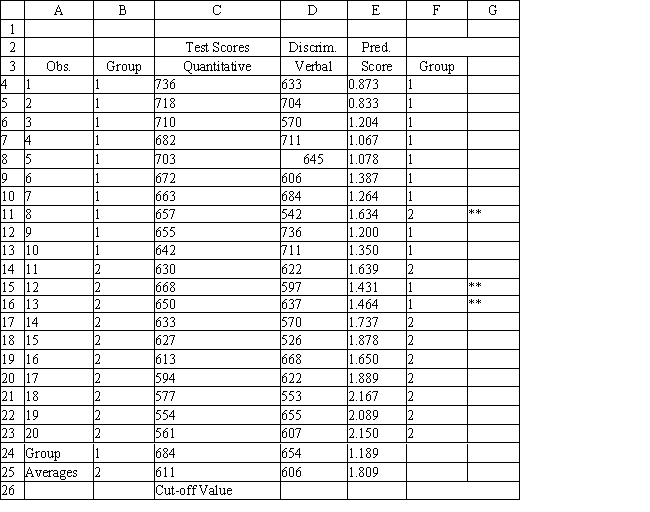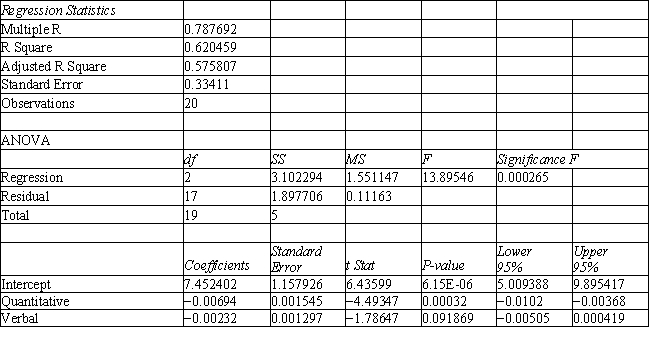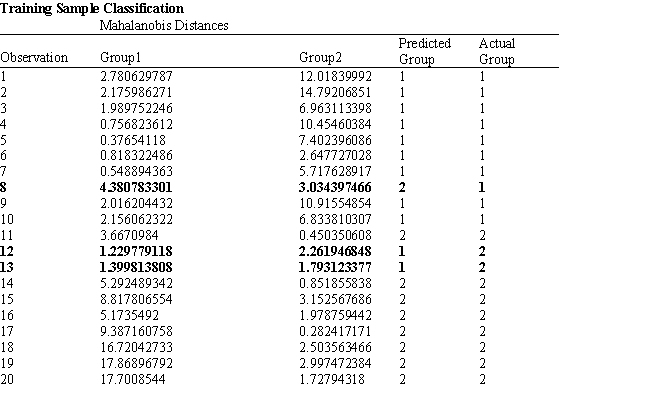Exhibit 10.1
The following questions are based on the problem description and the output below.
A college admissions officer wants to evaluate graduate school applicants based on their GMAT scores, verbal and quantitative. Students are classified as either successful or not-successful in their graduate studies. The officer has data on 20 current students, ten of whom are doing very well (Group 1) and ten who are not (Group 2) . 




-Refer to Exhibit 10.1. How many observations are classified correctly?
Definitions:
Descriptive
Related to describing or giving an account of something in words, including detailed information or characteristics.
Inferences
The act of drawing conclusions from data or evidence.
Institutional Review Board (IRB)
A committee established to review and approve research involving human subjects, ensuring ethical standards and participants' rights are upheld.
Q6: Two techniques that were developed to help
Q18: Uncertainty<br>A) is the most difficult thing about
Q21: What is the formula for the probability
Q38: Refer to Exhibit 11.9. What is the
Q39: A simulation model was replicated 100 times
Q51: Refer to Exhibit 14.9. Assume the formula
Q55: The total sum of squares (TSS) is
Q57: A jockey refers to<br>A) a customer who
Q60: In running simulations under Analytic Solver Platform
Q88: Consider the constraint <br>X<sub>3</sub> + X<sub>4</sub> +